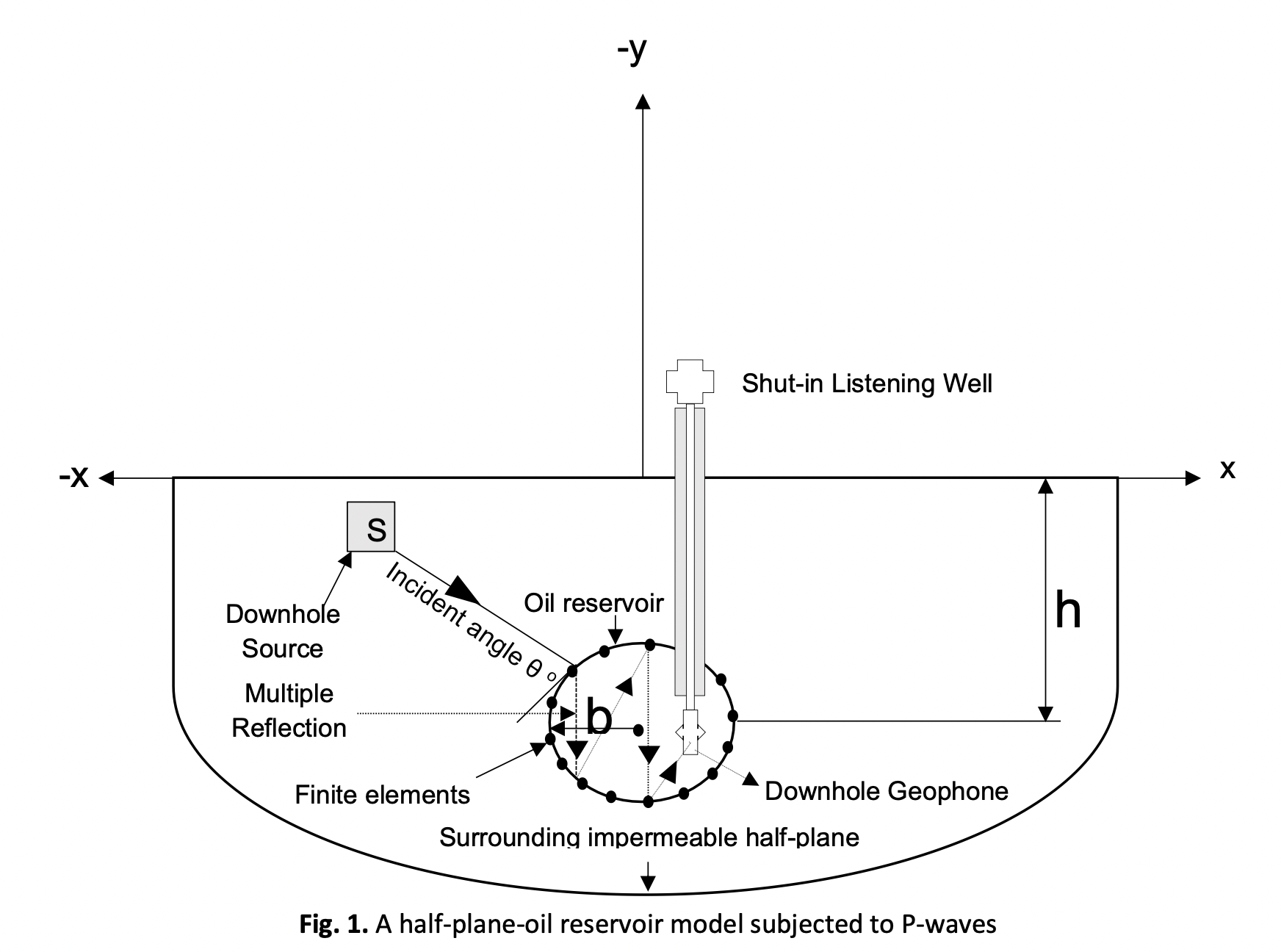Seismic Wave Excitation of Mature Oil Reservoirs for Green EOR Technology
DOI:
https://doi.org/10.37934/arfmts.103.2.180196Keywords:
Elastic wave, EOR, finite element method, mesoscopic frequency, oil reservoir, seismic stressAbstract
Elastic wave-based oil mobilization of residual oil in heterogeneous reservoirs is a viable, low-cost, and green technology method of enhanced oil recovery (EOR). Applications for elastic (seismic) waves at the reservoir scale are currently in the preliminary stages of investigation and development. We employ a two-layer numerical finite element method (FEM) in this research to investigate the possibility of effective propagation of seismic waves in the low permeability area of a mature oil reservoir when seismic stress load is delivered to the rock matrix via a downhole source. The purpose of this research is to evaluate the potential of fluid and rock matrix displacement amplitudes for crossflow generation in a mature oil reservoir. In a low permeability formation, the numerical results reveal that, as the observation radius approaches the reservoir boundary, the rock matrix time-domain displacement performs better as a wave propagation parameter than the pore fluid displacement. However, crossflow oscillations at a peak mesoscopic frequency of 3.0 Hz produce an instantaneous oil transfer rate (recovery rate) of 2.5% (bypassed oil) from the low permeability area. This method can be used in combination with water flooding to recover more oil from both high and low-permeability areas. Mesoscopic attenuation frequency can therefore be utilized as one of the indicators to assess oil recovery in heterogeneous oil reservoirs.
Downloads
































